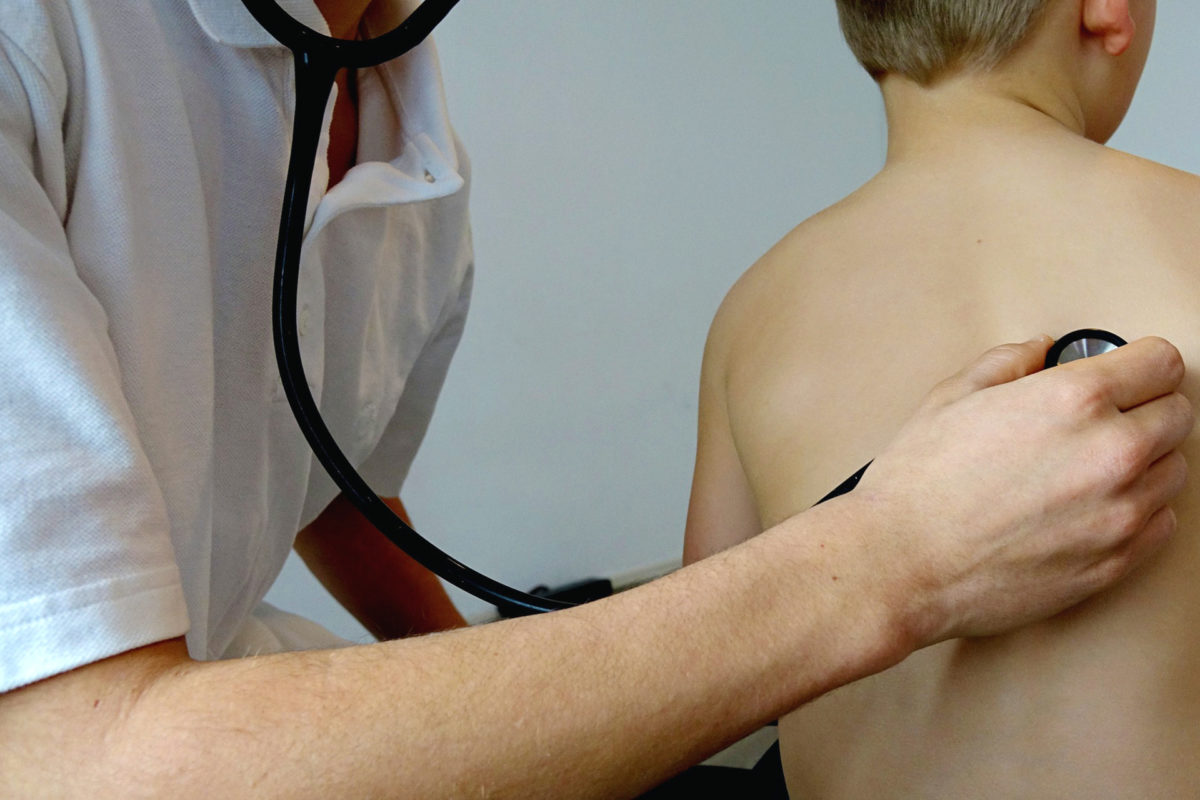Do you know how a stethoscope works in general?
Sound (sound vibrations) has helped a lot of people in various ways. Whether it be for professional use or entertainment purposes, hearing sounds can mean a lot of things to a lot of people.
But in the medical world, sounds that come from the human body can interpret several things including your health conditions. This is why stethoscopes are very essential instruments in the industry of medicine and health care. And understanding the uses and functions of a stethoscope can help you in your own stethoscope usage.
All About Stethoscopes
Stethoscopes are utilized by doctors and nurses. They are used for both monitoring purposes and critical conditions. So, the chance of not seeing a stethoscope in a hospital or a clinic is not very apparent. In fact, stethoscope instruments are necessities in these areas.
But aside from using these instruments in the medical industry, stethoscopes are also available for home and personal uses. As it happens, you don’t need to be a specialist or a Ph.D. holder in order to use a stethoscope. Also, you don’t need to be a professional doctor or nurse to utilize one.
Although, of course, it is essential for you to learn a few skills and knowledge about it, using stethoscopes is very simple. And learning how a stethoscope works is basically one of the first few steps that you would need to understand.
Apparently, almost every single person today already know how to use a stethoscope. This is because using the instrument is very easy to use and apply. It is pretty straightforward. But the story is quite different when interpreting the things that you would obtain from using the instrument. And that needs knowledge.
But even so, learning the basics will already get you there. And in this guide, you would get a few important notes on how to use a stethoscope and how they function in general. Moreover, you can even get the best stethoscope on the market once you fully understand the totality of its parts and uses.
Parts of A Stethoscope And How They Function
When you decide to learn about stethoscopes and how they naturally work, it is essential for you to learn first the basic stethoscope parts. Some people would ask if the parts of a stethoscope are just similar to other stethoscope instruments. As it happens, there are basic parts of a stethoscope that each and every one of them has. However, some stethoscopes might have additional parts and features depending on the manufacturer and brand. Nevertheless, the main and basic parts remain the same for all the stethoscopes on the market today.
The Headset Section
The headset is the upper half section of a stethoscope. And in this section, there are three components: eartubes, eartips, and tension springs.
All three components are placed ergonomically to provide comfort and convenience to the user’s ears without hampering the quality of the sound in the process of using a stethoscope.
Eartips
As everyone knows it, the eartips of a stethoscope is the part of the instrument that goes into the ears of the users. And through the earpiece, it is where the sound goes through so users can receive it.
When considering the eartips, comfortability is the biggest factor to regard in this case. This is because users might get irritations and painful sensations when the eartips are not comfortable. And this is a real inconvenience on the users part. One great example of the stethoscope that has a very comfortable eartips is the Welch Allyn Adult Professional Stethoscope.
Normally, the materials found in eartips are rubber or silicon types. These materials allow the tips to naturally fit the users’ ears and prevent the external sounds to hinder the subjected sounds.
Also, eartips are the most inexpensive parts of a stethoscope. Accordingly, it is the most apparent to replacements.
Eartube
The eartubes are the metallic part that you would see in a stethoscope. It actually the connects the eartips to the tubing that allows the vibration of sound to pass through going to the eartips.
It is important for you to understand that the eartube is the one that is responsible for isolating and transferring the sound to the eartips. And they are engineered to minimize the loss of sound in the process of transfer.
Through the eartubes, sounds vibrations are separated from left to right. It helps the channeling process in totality. You may want to check the 3M Littmann Master Cardiology Stethoscope if you want a good-looking eartube in a stethoscope.
Tubing
If you were able to use a  stethoscope, then you already know that this instrument has a flexible lining in its middle section. Now, this ‘flexible lining’ is called the tubing of a stethoscope.
stethoscope, then you already know that this instrument has a flexible lining in its middle section. Now, this ‘flexible lining’ is called the tubing of a stethoscope.
The main purpose of tubing is to ultimately maintain the frequency of the sound or the sound level that is captured by the responsible parts of a stethoscope.
But keep in mind that tubing is not the same for all stethoscopes. There are models that feature a single tubing. Others, however, feature a dual lumen tube. This will all together vary from one brand or manufacturer to another. Even so, decent professional stethoscopes normally come in a dual lumen design of tubing just like the 3M Littmann Cardiology IV Diagnostic Stethoscope.
The Chest-Piece Section
The chest-piece section is where the lower end of a stethoscope can be found. In this area, the components are the stem, chest-piece, bell, and diaphragm.
While the headset section is where the users obtain the output, this chest-piece section is where the users obtain the input.
Stem
The stem of a stethoscope is a metal or stainless steel part of the instrument. But don’t get it wrong as many users think that this is just the same with the eartube.
By and large, the stem is the responsible part that connects the tubing to the chest-piece area. And alongside this function, the stem is also the part where the users can switch the chest-piece diaphragm and bell.
ChestPiece
The chestpiece is one of the most essential parts of a stethoscope. Without it, the stethoscope will be basically useless and nonsense. As it happens, this part is the ‘head’ of the stethoscope. And it is where the input (sound) will start its transferring processes.
Accordingly, this is the part that the users subject to the skin of a patient. And it is initially the ‘listening device’ that allows the sound to enter the linings of a stethoscope. And to make it much easier, the chest-piece is the one that makes contact on the skin, chest, back or stomach of a person.
Some stethoscopes feature a single-head type. But others would have a dual head design instead. Also, high-end chest-pieces work even if they are applied indirectly from the skin. They can pick-up sounds even through layers of clothing. Stethoscopes like MDF ProCardial ER Premier Cardiology Stethoscope and a few cardiology stethoscopes from 3M Littmann are the best examples of this type.
Diaphragm and Bell
In the chest-piece, there are two components that make up the head of a stethoscope. These are the diaphragm and bell. The diaphragm is the apparently larger white circular section that you can find in the head of a stethoscope.
Naturally, this side of the head is the one that allows the users to pick-up sound on a much larger and wider scale. The diaphragm also allows the stethoscope to pick-up a much higher frequency of sound.
The most common diaphragms are non-chill. And they provide maximum comfort to the patients when the head is already in contact with their skin. Other stethoscopes would also have a hypoallergenic diaphragm to further ensure the maximum comfort and security to the patients.
As for the bell, it is the smaller white circular end of the chest-piece. You may find it on the other end of the head, at the back of the diaphragm. Usually, the bell is used for a lower scale of sound listening as this area does not pick-up sound frequencies that easily.
To further understand how a stethoscope works, this video can show you the actual uses and functions of each part of a stethoscope:
How A Stethoscope Works In Totality
With the parts and sections given above, it is now much easier to understand how stethoscope works on its own.
Primarily, the user would need to wear the stethoscope by putting in the eartips on the ears. And once the eartips are in place, the diaphragm of the chest-piece can now be used to listen to the various sounds on different sections of the body.
To simply put it, when the diaphragm picks-up a sound from the skin, say in the chest or heart area of the body, it naturally vibrates on its own. Accordingly, these vibrations are high-frequency sounds that will then travel up to the tubing going into the earpieces which will then proceed to the user’s ears.
Basically, this is how a stethoscope works. And as mentioned, any type or brand of stethoscope would involve the same procedure or process. And although some may feature additional functions, all stethoscopes work basically the same.




